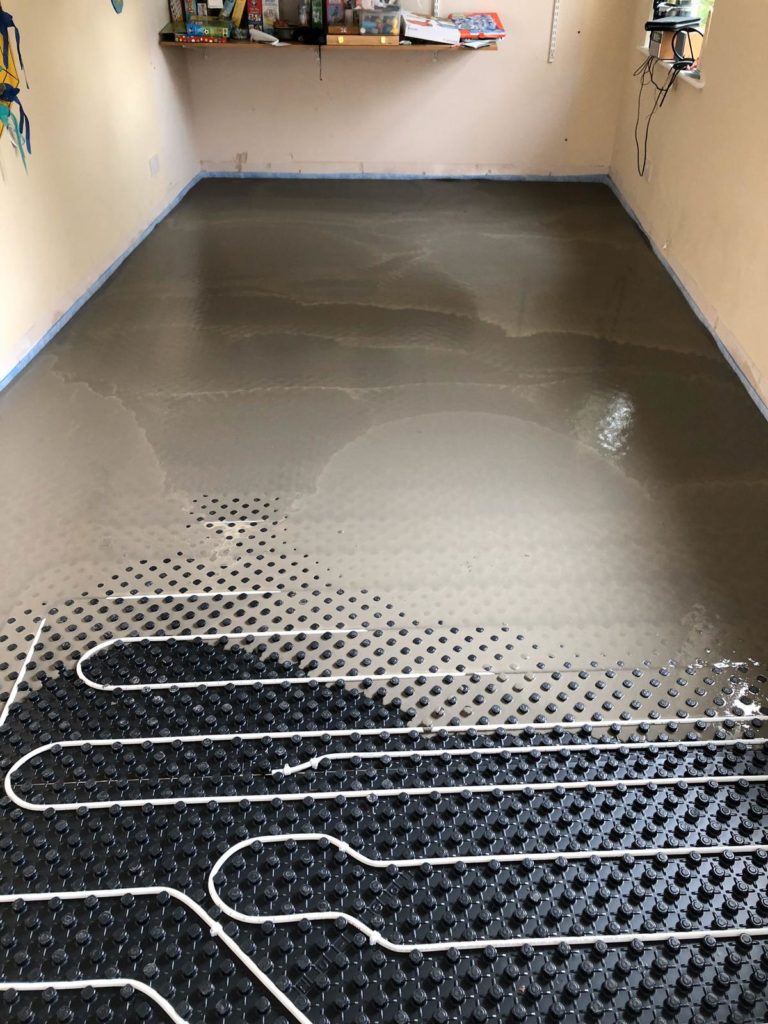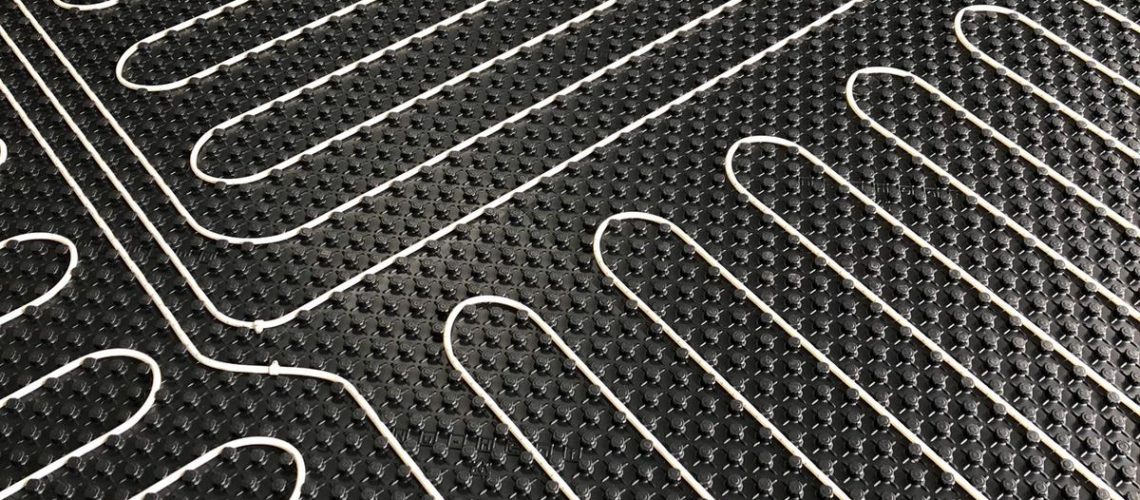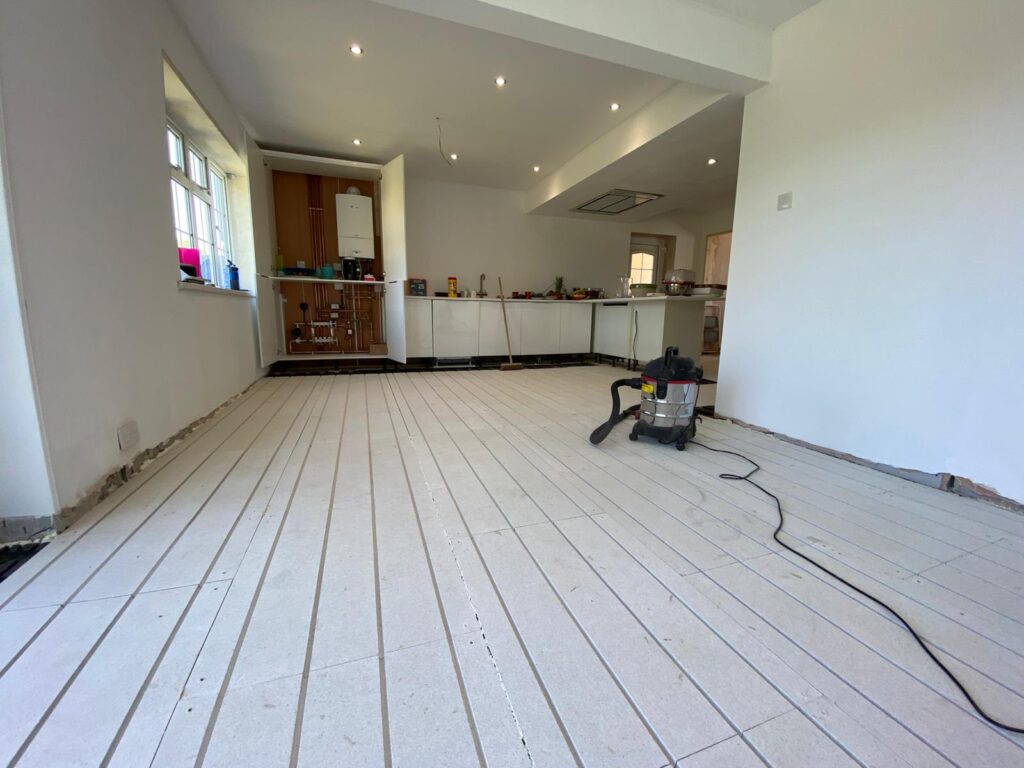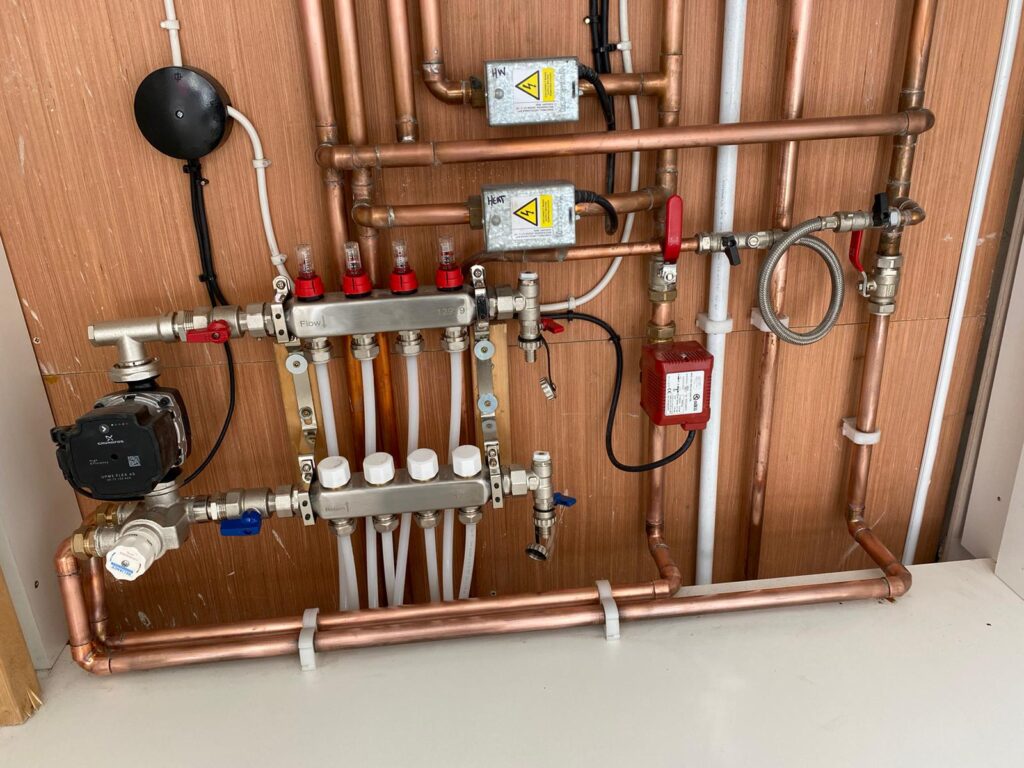In this blog, we compare two unique methods of retro-fitting warm water underfloor heating installations. We have used both methods in properties over the past year and have found some impressive qualities in both of them. Traditional methods of underfloor heating were only available to new builds or extensions because of the installation requirements. Thankfully, there are now retro-fit underfloor heating solutions to overcome the hurdles posed when considering underfloor heating.
Why choose underfloor heating?
Underfloor heating is a very effective way of heating a room. The floor becomes one large radiator, heating the coolest air in the room. This has clear advantages over wall-hung radiators. The extensive surface area of the floor need not get hot to provide a comfortable temperature. Radiators, however, can only provide heat from a small area, and therefore need to be much hotter to supply the room with adequate heat. This can lead to an imbalance of heat within the room, creating hot and cold places, especially near doors and windows.
What are the drawbacks to underfloor heating?
So, we know underfloor heating has superior qualities over wall-hung radiators, why isn’t it installed in more homes? Well, there are two major drawbacks. First, cost. It is notoriously more expensive to install underfloor heating. Compared to a single radiator installation, which requires flow and return pipes and two radiator valves, the components cost relatively little. Underfloor heating requires more kit: there are the flow and return manifold which includes a pump, mixing valve, balancing valves and isolation/motorised valves. There are zone thermostats to operate each section of the underfloor heating, providing complete comfort control for the home. Finally, there is the heating element itself. This extensive section of pipe weaves through the room on a membrane and then covered in a concrete screed. With all this extra kit, it will cost more, especially when you add the cost of installation too.
Do the benefits of underfloor heating outweigh the costs?
This is a question relative to anyone’s standard of living. For many, the monetary costs are too high, so it is fair to assume that the radiator option would be best. Those of us fortunate to have underfloor heating would say it is a straightforward decision. And with home lifestyles demanding more open-plan spaces, the need for a retro-fit underfloor heating system has never been greater. At Parkstone Heating, we have two examples of retro-fit underfloor heating that costs the costs and installation time and disruption, but still provides all the wonderful features of traditional underfloor heating.
Nu-Heat Retro-Fit Underfloor Heating.

Nu-Heat retro-fit underfloor heating is a quick solid concrete installation that fits around existing kitchen units. This installation installs a pipe through plastic matrix panels on top of an existing solid floor. The pipe diameter is much smaller than traditional underfloor heating, which means the increase in floor level will be relatively small. The quick-drying screed just covers the pipework, providing a surface ready for the floor covering of choice.
See our case study using Nu-Heat Underfloor Heating here.
Solfex Warm Board Underfloor Heating.
Solfex Warm Board Underfloor Heating uses boards with preformed pipe channels. The boards sit on existing floors are fixed to the floor and glued together. Next, the pipe is layed into the preformed pipe channels in the boards and connects to the underfloor heating manifold. This underfloor heating system is ready to be tiled straight onto. For other floor coverings such as vinyl type flooring a thin layer of screed can be put down first.
Both options speed up the installation of underfloor heating and have unique qualities that conventional underfloor heating cannot provide. Yes, the cost is still greater than the wall hung radiator option, but for those that want the huge benefits of underfloor heating, these are worth a look.



